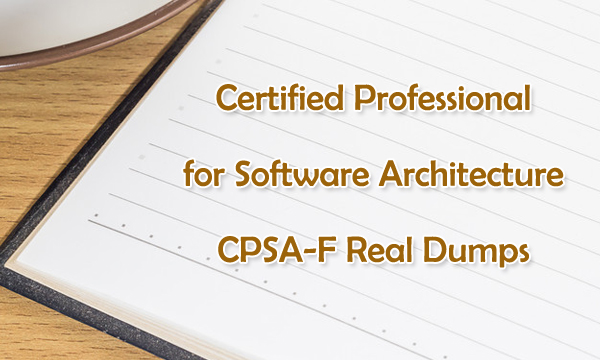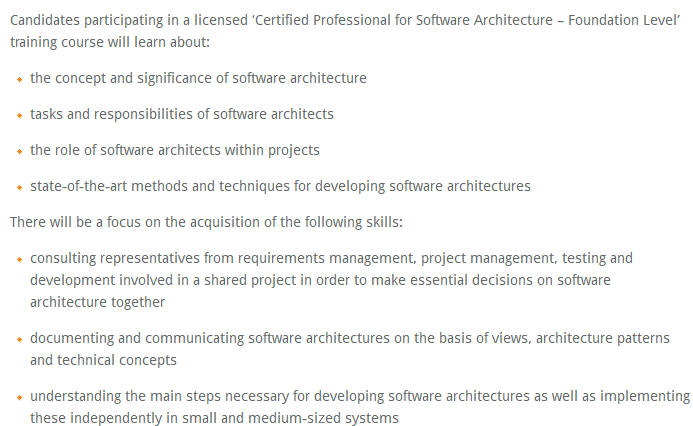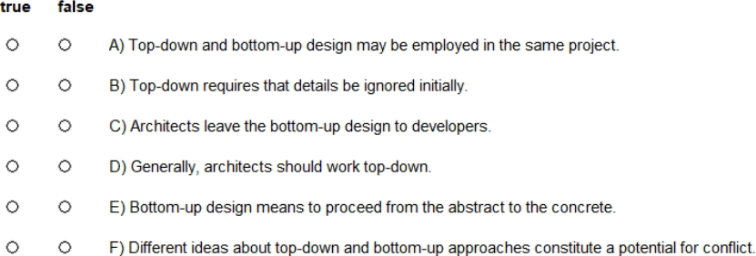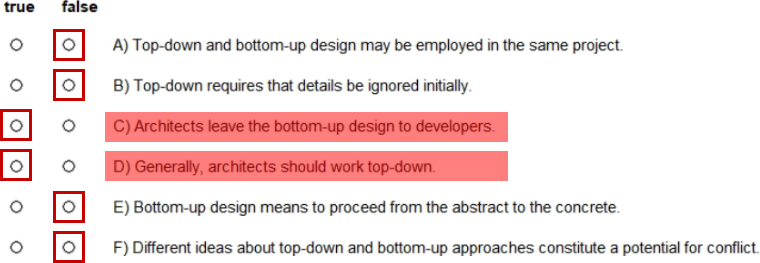iSAQB CPSA Foundation Level CPSA-F Real Dumps
Earning iSAQB CPSA-F (Foundation Level) certification is the first step to get Certified Professional for Software Architecture (CPSA) certification. It is great that iSAQB CPSA Foundation Level CPSA-F Real Dumps have been released to help you pass CPSA-F Certified Professional for Software Architecture, Foundation Level exam in the first try. Real CPSA-F exam dumps questions are checked by our iSAQB certified experts, and we have verified all the CPSA-F exam questions and answers are real and valid for 100% passing.

Certified Professional for Software Architecture (CPSA) Is Developed By The iSAQB
Certified Professional for Software Architecture (CPSA) certification is a three stage program, which is developed by the iSAQB. The International Software Architecture Qualification Board e.V. (iSAQB®) consists of professional software architecture experts from industry, consulting, training, academia and other organisations.
The iSAQB® Certified Professional for Software Architecture programme (CPSA®) provides software architects with a standardised scheme for initial and further training that is globally recognised. Currently, CPSA certification programe consists of three certification levels:
Foundation Level
Certified Professional for Software Architecture Foundation Level provides the basics. Once you are certified at iSAQB CPSA-F (Foundation Level) level, you will be able to demonstrate that you are capable of creating and documenting a system's architecture independently as well as of assuring and assessing its quality and that you are familiar with the tools required for this.
Advanced Level
Certified Professional for Software Architecture® – Advanced Level Level with a modular structure, is aimed at software architects with advanced knowledge and will allow you to demonstrate that your skills are not only of a technological but also a methodical and communicative nature. The latest news of iSAQB CPSA Advanced Level on November 5, 2019 shown that, "The iSAQB e.V. published the curriculum for the new module BLOCKCHAIN for the Certified Professional for Software Architecture® – Advanced Level. The Blockchain technology is the basis for new and innovative applications. With the new Advanced module, the iSAQB® offers a well-founded further education in order to be able to make architectural decisions about the choice of tools and to successfully design decentralized applications with the Blockchain technology. The new module focuses on the transfer of software engineering aspects from traditional methods to blockchain technologies."
Expert Level
Certified Professional for Software Architecture® - Expert Level is currently still being developed.
iSAQB CPSA-F (Foundation Level) Is The First Level of the iSAQB® CPSA® Program
Certified Professional for Software Architecture Foundation Level, I mean CPSA-F, is the first level of the iSAQB® CPSA® program. iSAQB CPSA-F (Foundation Level) certification is aimed at anyone interested in the topic of software architecture. It is particularly suitable for Software designers, software developers, software architects and system analysts. No matter who take CPSA-F exam for certifying, you can learn the skills as the picture shown:

Completing CPSA-F Certified you can gain more benefits to improve yourself:
● You will have an internationally recognised certification.
● You will learn about the conceptual design and importance of software architecture.
● You will understand the tasks and responsibilities of software architects and their roles in projects.
● You will get to know the methods and techniques for developing software architectures.
● You will gain insight into requirement and project management, as well as testing and development related to software architecture.
● You will learn about the documentation and communication of software architecture.
iSAQB CPSA Foundation Level CPSA-F Real Dumps Is Great For iSAQB CPSA-F (Foundation Level) Certification
CPSA-F Certified Professional for Software Architecture, Foundation Level exam is the first step to get CPSA certification. If you are preparing, we can be sure that iSAQB CPSA Foundation Level CPSA-F Real Dumps is great for your certification. You can come to get real CPSA-F exam questions and accurate answers to pass CPSA-F exam in your first try.
All others are useless, just read CPSA-F free exam demo questions online for checking:
What are the four key terms in common definitions of software architecture? (Choose four.)
A. Source code
B. Building Blocks
C. Functionality
D. Relationships
E. Components
F. Requirements
G. Interfaces
Answer: B,D,E,F
What role does understandability play for architecture documentation? (Choose three.)
A. It is desirable, but not essential.
B. It is less important than completeness.
C. It is an important quality characteristic.
D. It is a quality characteristic together with correctness and efficiency.
E. It is a quality characteristic together with simplicity and brevity.
F. It is a quality characteristic together with scope and completeness.
Answer: C,D,E
HOTSPOT
Which statements regarding top-down and bottom-up design are true? (Assign all answers.)

Answer:

Name the three most important fields of template-based architecture documentation. (Choose three.)
A. To describe module structures (white boxes)
B. To describe individual architectural modules and their external interfaces (black boxes)
C. To use copyright templates for a consistent description of project/system meta information within documents and source codes
D. To use a standardized document structure
E. To reuse code and test case templates
Answer: A,B,D
Which of the following techniques are best suited to illustrate the interaction of runtime building blocks? Select the four most suitable techniques.
A. Activity diagrams
B. Sequence diagrams
C. State diagram
D. Flowcharts
E. Class diagrams
F. Tabular description of interfaces
G. Depiction of screen flows (sequence of user interactions)
H. Numbered lists of sequential steps
Answer: A,B,C,E
